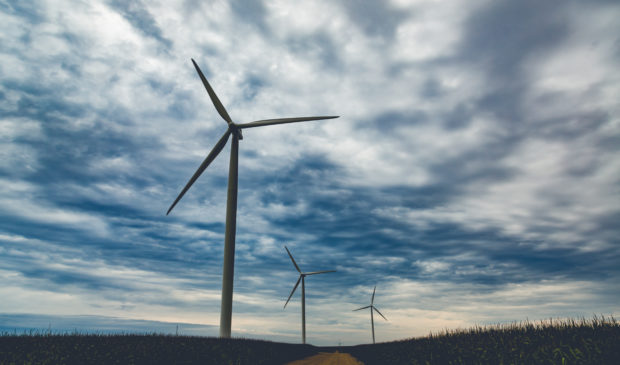As temperatures increase, investment in renewables is already shaving dollars off Austin utility bills
Friday, October 26, 2018 by
Ryan Thornton Despite summer 2018 being one of the hottest on record in Austin, energy prices did not spike with the temperature. Instead, energy costs for customers this summer were identical to those of summer 2017, even though temperatures were higher this year.
Khalil Shalabi, Austin Energy’s vice president of strategy, technology and markets, explained the phenomenon to the Austin Energy Utility Oversight Committee during an Electric Reliability Council of Texas (ERCOT) market update Wednesday afternoon. According to him, the two primary reasons for the lower prices are a record production from renewables – which have negligible marginal costs – and a lively market response as a result of the higher temperatures.
While Austin Energy did in fact see a rise in energy costs, it simultaneously generated much-needed income from its renewable sources. This led to tempered energy prices for customers while allowing for increased overall energy use.
Austin Energy currently uses renewable sources for over 30 percent of total energy output, but that is on track to increase dramatically over the next decade based on the Austin Energy Resource, Generation and Climate Protection Plan.
Shalabi noted that, although renewable sources are proving to be a great investment, making this transition will not be easy considering the role of thermal sources – coal, gas and nuclear – in supplying Austin’s energy use. It is made even more difficult by the projected increase in energy needs over the coming years.
Two essential Austin Energy sources – Decker Creek Power Station and Fayette Power Project – are expected to be retired in 2021 and 2023, respectively. Both Decker (natural gas) and Fayette (coal) are currently responsible for a significant portion of Austin’s energy consumption.
“Those were strong performers over the summer, so we will have to figure out a different paradigm to protect our customers after those dates,” said Shalabi.
Part of this new paradigm is bold investment in renewable energy, as in Austin Energy’s recent deal with East Blackland Solar Project 1 for a 144-megawatt local solar power facility, but there will be significant challenges to meet the energy demands of the city as two essential power plants are closed within only five years.
Council Member Ora Houston emphasized the need to make sure it wouldn’t be customers that ended up paying the price for the closing of these plants if there were not other viable renewable sources available.
“Customers like to have that hedge with Fayette and Decker so that we can use it to make sure that their costs don’t go up,” said Houston. “Sometimes we have a goal and a vision that impacts negatively the customers who are going to have to pay if we don’t have those options available.”
The economic reward of investment in renewables, however, impressed the committee with the idea that keeping the thermal plants open may not be necessary.
“I just want to point out that one could equally conclude that we should invest more in renewables than we should keep the thermals open,” said Council Member Alison Alter.
Echoing that sentiment, Council Member Leslie Pool noted the broad community support for closing the plants as soon as possible.
“I don’t want to walk away or push out any further retiring those plants,” said Pool.
Mayor Steve Adler requested help from Shalabi in making the argument to state government officials for the economic benefit of Austin’s investment in renewables.
“There’s still the perception among some people at the statewide level that Austin’s forays into renewable energy is costing the state,” said Mayor Steve Adler.
Photo by Tony Webster made available through a Creative Commons license.
The Austin Monitor’s work is made possible by donations from the community. Though our reporting covers donors from time to time, we are careful to keep business and editorial efforts separate while maintaining transparency. A complete list of donors is available here, and our code of ethics is explained here.
You're a community leader
And we’re honored you look to us for serious, in-depth news. You know a strong community needs local and dedicated watchdog reporting. We’re here for you and that won’t change. Now will you take the powerful next step and support our nonprofit news organization?




